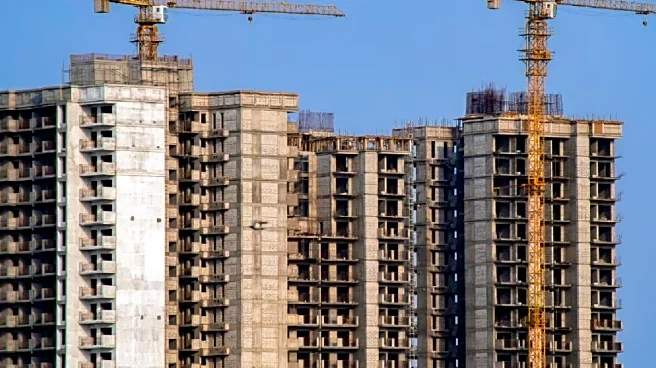Shares of Ahluwalia Contracts (India) Ltd on Monday became one of the biggest gainers after the company posted strong Q2 results. The stock was trading at Rs 983.55 apiece on the NSE at 12:00 pm, which was 11.5% higher as compared with the previous close of Rs 882.9.
The company’s profit doubled to Rs 78.6 crore in the second quarter ended September 2025, compared with Rs 38.7 crore a year ago. Its revenue rose 16.4% to Rs 1,177 crore during the quarter, against Rs 1,011 crore revenue a year ago.
Its margin also improved, rising from 7.3% to 10.9% on a year-on-year basis.
Its sales rose 16.39% to Rs 1177.30 crore in the quarter ended September 2025 as against Rs 1011.48 crore during the previous quarter ended September 2024.
Ahluwalia Contracts
Technical Indicators
The stock is now trading above its 10-day, 20-day, 50-day, 100-day and 200-day exponential moving averages, indicating bullish momentum in the chart. Its Relative Strength Index, which shows overbought or oversold conditions, surged to 63.72 after Monday’s stock price jump, indicating strength in the momentum.
The stock had been falling for over a month. It has given a return of 130% in the past three years and about 320% in five years.
India’s Construction Sector Outlook
India’s construction sector continues to expand at a remarkable pace. The market, valued at $1.04 trillion in 2024, is projected to rise to $1.21 trillion in 2025 and is on track to almost double to $2.13 trillion by 2030, implying a 12.1% CAGR between 2025 and 2030.
As the second-largest employer after agriculture, the construction industry plays a crucial role in India’s economic backbone. It contributes roughly 9% to the country’s GDP and directly employs about 51 million people. The ecosystem is vast and interconnected, spanning nearly 250 sub-sectors that link into multiple parts of the economy.
Within this landscape, the real estate sector is set for significant expansion. It is expected to touch a $1 trillion market size by 2030, with its share of India’s GDP poised to rise to around 13% by 2025. Demand for commercial real estate remains strong — office spaces, hotels, retail complexes and entertainment hubs are all driving growth. In 2020, net office absorption across the top six cities reached 31.9 million sq. ft.
Urbanisation will be a major force shaping future demand. By 2030, more than 40% of India’s population is estimated to live in urban areas, up from about 33% today. This shift is likely to create the need for 25 million additional affordable and mid-income housing units.
The government’s National Infrastructure Pipeline (NIP) further strengthens the outlook. With a planned spending of $1.4 trillion, the programme allocates 24% to renewable energy, 18% to roads and highways, 17% to urban infrastructure, and 12% to railways, underscoring India’s broad and sustained push into next-generation infrastructure.



/images/ppid_59c68470-image-176311511512125554.webp)
/images/ppid_59c68470-image-176310760856732969.webp)
/images/ppid_59c68470-image-176336503049357653.webp)

/images/ppid_59c68470-image-176335014021995140.webp)
/images/ppid_59c68470-image-176334257457944488.webp)
/images/ppid_59c68470-image-176336253666910801.webp)

/images/ppid_59c68470-image-176334769545234444.webp)
/images/ppid_59c68470-image-1763357526060607.webp)
/images/ppid_59c68470-image-176309514186548724.webp)
/images/ppid_59c68470-image-176311003578995926.webp)